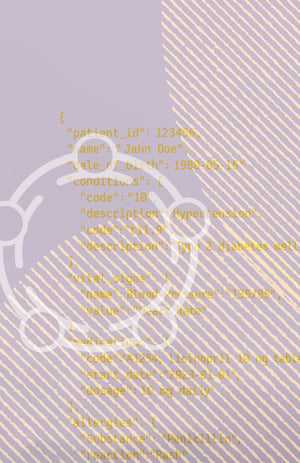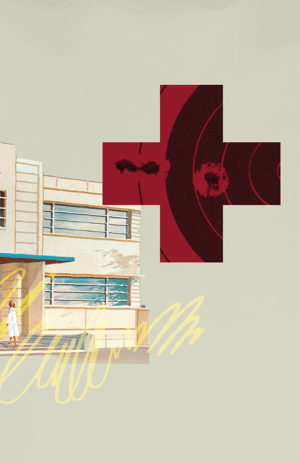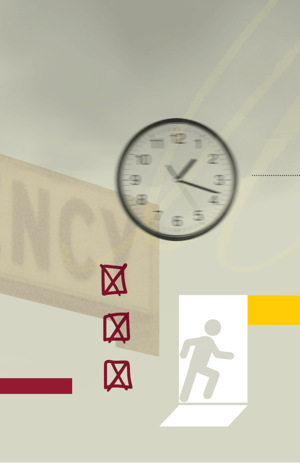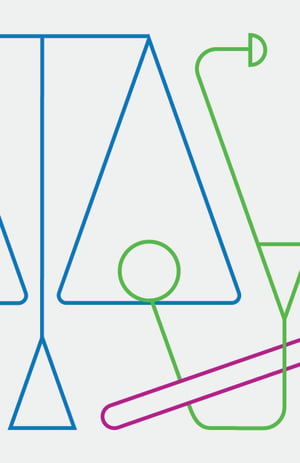
September 2025
Emergency Preparedness
Table of Contents



Risk Management in Emergency Preparedness
A Vital Priority for Healthcare Professionals
In today’s healthcare landscape, medical practices and hospitals face a growing array of threats—from natural disasters and medical emergencies to workplace violence. For agents partnering with ProAssurance insureds, understanding and promoting risk management strategies in these areas is essential to safeguarding both providers and patients.
Natural disasters such as hurricanes, floods, and wildfires can disrupt operations, damage infrastructure, and delay critical care. Without proper emergency preparedness, these events can lead to adverse patient outcomes and potential malpractice claims. Similarly, medical emergencies, whether isolated instances or mass casualty events, require swift, coordinated responses to minimize exposures.
Workplace violence presents another area of liability where risk management can assist. Healthcare workers are among the most frequently assaulted professionals, and violent incidents can compromise care delivery and injure staff, patients, and bystanders.1 A provider distracted or harmed during a violent episode may inadvertently commit a medical error, opening the door to malpractice litigation. Recognizing the dangers of workplace violence for healthcare providers is the first step in working toward a solution of safer and more effective care.
From an insurance perspective, risk management is not just a precaution—it’s a strategic imperative. Encouraging insureds to implement emergency preparedness plans, conduct regular emergency drills, and establish workplace violence prevention protocols can significantly reduce claim frequency and severity.
The Risk Management department at ProAssurance is committed to providing resources and support to allow insureds to better prepare for the unknown. Encouraging insureds to adopt policies such as de-escalation training, secure facility design, and clear reporting protocols can mitigate the risks. Planning for these emergencies also demonstrates a commitment to patient and staff safety, which can positively influence the culture of the organization.
Our agency partners play a key role in educating clients about these risks and can partner with the ProAssurance Risk Management team to deliver education, provide feedback on current policies, and develop strategies to mitigate these risks. Through our new Tabletop Exercises, which you can read about in this issue, and enduring online CME programs, healthcare professionals and staff can educate themselves and conduct onsite training to prepare for various scenarios and develop a crisis response.
By positioning risk management as a strategic investment, you can help medical practices and hospitals protect their people, patients, and reputations.
1American College of Surgeons


Risk Management Launches Its Latest Emergency Preparedness Tool for Insureds
ProAssurance Risk Management is excited to introduce our latest resource to help practices hone their emergency preparedness: Tabletop Exercises.
Regardless of an organization’s size, location, or industry, it is not immune from emergency situations or high-risk circumstances that may occur. Healthcare practices are no different; they should anticipate, plan for, and be prepared to effectively respond to urgent situations they might encounter in their particular setting. Scenario-based planning tools like Tabletop Exercises are critical in assessing a team’s emergency response capacity and highlighting gaps in knowledge and policies.
A widely utilized resource across various industries, Tabletop Exercises can help healthcare teams gain insight into their emergency planning and response readiness, and underscore where further instruction and training may be needed. Tabletop sessions focus staff on their organization’s specific, established protocols (or lack thereof), while identifying unique, role-based responsibilities during emergencies.
The ProAssurance Risk Management department has created a complementary suite of healthcare-specific Tabletop Exercises for use by practices of any size, specialty, or location. These Tabletops encourage and allow our insureds to cooperatively close the gap between clinical risk and real-time preparedness.
One of the reasons the ProAssurance Risk Management team created Tabletops was to address a resource gap identified through our Annual Baseline Self-Assessment, or ABSA. In our survey of several risk management categories, we noticed that regardless of practice size or specialty, responses commonly indicated a lack of drills and preparation for all types of in-office emergencies, as illustrated in this ABSA report example.

The Tabletop Exercises each take around 60-90 minutes and are designed to apply to any practice’s distinct setup and staff ratios. They are informal, collaborative discussions that review emergency or unexpected situations arising in the healthcare setting. These sessions help organizations develop the roles that key team members may play and their individual and collective responses during specific emergencies. To gauge response readiness, identified team members will talk through a fact pattern and apply it to their office layout, workflow, staff structure, and policies, while incorporating best practices.
We currently have four scenarios published on the Risk Management site, with more scenarios in the works:
- Medication Adverse Reaction
- Natural Disaster: Power Outage
- Medical Emergency on Premises
- Workplace Violence: Active Shooter
We are pleased to offer this new, proactive learning tool to our insureds. Under pressure in a time-sensitive environment, favorable results do not occur in the absence of dedicated preparation and practice. Understanding the actions needed and consequences of an emergency—including which staff must act, when they should act, and what steps they will need to take—sets up practices for increased patient safety and risk mitigation.
We will be promoting Tabletops in our various marketing channels, including our monthly Risk Management emails as well as future issues of ProVisions. We also encourage you to share this new preparedness tool with your ProAssurance clients.
The Tabletop Exercises are available on the Risk Management website in the Education menu or go directly to RiskManagement.ProAssurance.com/tabletop-exercises.


Preparation & Mitigation: What To Do Before Disaster Strikes
The lack of predictability and the potential long-term effects of a natural disaster can cripple a healthcare entity. Proper emergency management preparation and mitigation can vastly decrease vulnerabilities during a natural disaster.
“A comprehensive emergency management program should include a detailed preparation plan in order to respond effectively,” says Laurette Côté, Senior Risk Management Consultant. “Although preparation is the key, other phases of an effective strategy incorporate mitigation, response, and recovery steps.”
There are extensive resources available to healthcare entities for preparation. Below are resources for helping improve patient safety and reducing liability risk in the event of a natural disaster.
Preparedness involves a continuous process of planning, training, testing, evaluating, and correcting to ensure the best disaster response and recovery possible. The cycle of preparedness begins with risk assessment and results in a plan. The plan should include training that helps ensure everyone knows their roles and responsibilities and can perform their designated duties in response to a disaster. Due to the nature of natural disasters, preparedness and mitigation strategies may overlap.
Action items:
- Conduct a risk assessment [also referred to as a hazard vulnerability analysis (HVA)] to identify potential geographic vulnerabilities in practice locations. For example, geographic vulnerabilities include hurricanes in coastal areas, earthquakes on the west coast, and blizzards and ice storms in increasingly expanding areas across the United States.
- Prepare for each vulnerability identified in the risk assessment. For example, have plans, agreements, protocols, and policies in place for:
- Patient evacuation to another facility to continue care in the event of facility destruction, patient transfer to an alternate care facility, or sheltering in place.
- Increased staffing immediately after a natural disaster, for example, granting temporary privileges to clinicians.
- Alternative means of meeting essential building utility needs, for example, maintaining healthcare operations during power outages, including protecting refrigerated vaccines and maintaining water supply.
- Create a crisis management team and designate a command center.
- Develop an effective emergency response plan, which may include an Emergency Operations Plan (EOP) or a Continuity of Operations Plan (COOP).
- Develop a business continuity plan.
- Develop and implement disaster preparedness training programs.
- Plan, test, and simulate the most likely disaster scenarios that may occur.
- Review the results of simulations and facility response to identify opportunities for improvement.
- Develop a plan for communication with stakeholders.
- Maintain a contact list for the supplies, services, and community/state/federal resources that will be necessary during response and recovery.
- Include the process for patient identification and family notification in an emergency.
- Appoint and train a spokesperson and backup spokesperson.
- Be prepared to use social media.
Natural disaster mitigation strategies are unique in that they focus on reducing the severity of the impact, instead of preventing the hazard. A risk assessment should provide the basis for mitigation strategies to improve readiness, response, and recovery.
Action items:
- Identify mitigation activities required by law, accreditation by professional organizations (e.g., The Joint Commission Emergency Management Elements of Performance), and participation in government programs [e.g., Centers for Medicare and Medicaid services (CMS) Emergency preparedness rule].
- Based on the risk assessment, prioritize facility-specific mitigation measures, such as redundancy of power, communications, and data management systems [e.g., obtaining uninterruptible power supplies (UPS) and emergency standby generators for critical equipment]; installing water-tight subbasement doors; reinforcing tornado/earthquake safe rooms; installing window film to prevent injuries from shattered glass.
- FEMA has various Hazard Mitigation Assistance grant programs.
- Review insurance policies to determine whether they adequately cover potential losses.
After developing a thorough preparation and mitigation plan, healthcare providers should then focus on their response and recovery plan. Please visit the ProAssurance Disaster Mitigation bundle for additional resources and strategies.
Many of these resources can be used to ensure you are prepared as well. As you share this information with your clients, take a moment to ensure your office records will be safe during an adverse event and that you will still be able to service your insureds. The peace of mind that comes with preparation is well worth the time you put into it.


Survey Data Reveals Importance of Preparation
Emergencies come in many forms, from high-risk natural disasters like fires or hurricanes, to medical emergencies, and even aggressive patients or family members. At ProAssurance, we know that although you cannot always predict a crisis, you can certainly be prepared for one. Our team of Risk Management consultants is ready to provide guidance and support when our insureds need it most.
An analysis of calls to our Risk team in 2025 shows that 30 percent of calls about emergency topics were related to emergency preparedness, while 30 percent involved medical emergencies, and 20 percent related to fires and workplace violence. Contact with our insureds generates the opportunity to extend helpful, informative, and relevant risk resources and education. But what if our insureds did not have to wait for a disaster to understand their risk?
Along with access to our Risk team, ProAssurance offers a proactive tool that can help identify gaps in emergency preparation. The Annual Baseline Self-Assessment (ABSA) analyzes several areas of risk exposure in medical practices, including emergency preparedness.
In an analysis of 2025 ProAssurance ABSA data, we found that in over 2,000 ABSA survey responses, 51.8 percent of participants expressed not having emergency drills within the past year or responded with neutrality about having an emergency preparedness plan. This data is evidenced by actual calls we have received on the Risk Management Helpline:
- One practice was facing an extended period of time without phones and fax machines due to a fire. The practice was seeking advice on devising a plan to obtain test results and communicate with their patients during the service outage.
- A specialty clinic had a patient with an unexpected medical emergency. During that event, they realized their staff was not prepared to respond and sought advice on training, procedures, and policies.
- A physician requested guidance related to a patient who threatened physical violence due to postsurgical pain they were experiencing.
In these instances, the Risk team offered immediate guidance while ultimately sharing the message that establishing and practicing emergency procedures can aid in the prevention of catastrophic outcomes when the unexpected occurs.
Highlighting where an insured should focus their planning is where the ABSA can help. ABSA results not only help us identify areas of risk but give us the opportunity to offer insureds specific, tailored resources and solutions to proactively plan for an emergency situation or disaster.
ProAssurance resources include a “2 Minutes: What’s the Risk” Natural Disaster Mitigation and Prevention video and a more in-depth analysis of emergency response and risk mitigation in Staff Education videos, “Expect the Unexpected” (Parts 1 and 2). When an insured is ready to build a disaster mitigation plan, ProAssurance provides a Risk Management Bundle for Disaster Mitigation that focuses on not only mitigation but preparedness, response, and recovery. Insureds can also view our latest Tabletop Exercise in this issue of ProVisions, which discusses Workplace Violence: Active Shooter situations and imparts risk management insight into appropriate emergency response.
When it comes to emergencies, no one can predict what might happen or when, but at ProAssurance we have tools that can help our insureds be ready!
If you have any questions, concerns, or you would like more information, please contact the ProAssurance Risk team at 844-223-9648 (toll free) or email RiskAdvisor@ProAssurance.com.


Comprehensive Risk Management Resource:
Disaster Mitigation Bundle
Natural disasters pose significant risks to healthcare facilities, potentially disrupting patient care and threatening organizational continuity. Our comprehensive Risk Management resource bundle provides healthcare entities with the essential strategies, tools, and guidance needed to prepare for, respond to, and recover from natural disasters effectively. Here's what you’ll find:
Four-Phase Emergency Management Framework
Our resource follows the proven emergency management cycle of mitigation, preparedness, response, and recovery, providing actionable strategies for each phase. Healthcare organizations will find specific guidance on reducing disaster impact severity, developing comprehensive emergency plans, managing crisis response, and facilitating recovery operations.
Risk Assessment and Planning Tools
The bundle includes detailed guidance on conducting hazard vulnerability analyses, developing emergency operations plans, and creating business continuity strategies. Organizations will learn how to identify geographic vulnerabilities, prioritize mitigation measures, and establish crisis management teams.
Disaster-Specific Resources
Specialized guidance covers major natural disasters including:
- Hurricanes and floods – preparation checklists, medical device protection, and flood response protocols
- Wildfires – evacuation procedures, air quality management, and record protection strategies
- Earthquakes – structural considerations, drill protocols, and multi-hazard planning
- Volcanic eruptions – emergency preparedness specific to volcanic threats
Critical Operational Guidance
Healthcare-specific considerations include patient evacuation protocols, medication management during disasters, medical record protection and reconstruction, staffing shortage solutions, and regulatory compliance during emergencies.
Recovery and Continuity Resources
Comprehensive guidance on facility damage assessment, contamination remediation, medical record recovery, and business operations restoration helps organizations return to normal operations efficiently.
Whether your clients are developing their first emergency plan or updating existing protocols, we hope you’ll share this comprehensive resource to help protect patients, staff, and operations during natural disasters.
“2 Minutes: What’s the Risk?” Natural Disaster Mitigation and Preparation
The lack of predictability and the potential long-term effects of a natural disaster can cripple an unprepared healthcare entity. Proper emergency management preparation and mitigation can vastly decrease vulnerabilities during a natural disaster. This video offers risk mitigation strategies to help your practice prepare.
Visit RiskManagement.ProAssurance.com/Bundles#Disaster for detailed implementation guides, downloadable checklists, regulatory compliance information, and links to additional emergency management resources.

Comprehensive Risk Management Resource:
Workplace Violence Bundle
Our comprehensive resource bundle provides healthcare organizations with the critical tools, strategies, and guidance needed to help protect staff, patients, and visitors from workplace violence threats. Here’s what’s included:
Comprehensive Risk Assessment Tools
Our resource bundle provides worksite analysis guidance to help organizations identify vulnerability factors and evaluate current safety measures. Healthcare facilities will learn how to conduct thorough risk assessments that examine patient populations, facility design, staffing patterns, and environmental factors that may contribute to violent incidents.
Prevention and Planning Framework
Essential components include developing workplace violence prevention plans, implementing patient behavioral agreements, and establishing clear incident reporting protocols. Organizations receive guidance on physical security enhancements—from simple door locks and panic alarms to sophisticated biometric systems and camera networks—tailored to different facility sizes and budgets.
Education and Training Programs
Structured training resources cover new employee onboarding, annual staff education requirements, and specialized training for high-risk settings. The bundle includes guidance on conducting mock drills with local law enforcement, developing de-escalation techniques, and ensuring visiting providers receive equivalent safety training.
Post-Incident Response Protocols
Comprehensive guidance on immediate response procedures, staff debriefing processes, and long-term support services help organizations manage the aftermath of violent incidents effectively. Resources address both the physical and psychological impacts on staff, patients, and organizational culture.
Documentation Resources
Detailed guidance on incident reporting requirements, OSHA documentation standards, and program evaluation methods ensure organizations meet regulatory obligations while building effective prevention strategies.
Specialized Focus Areas
The resource bundle addresses the unique challenges healthcare settings face, including violence from patients, family members, visitors, and even other healthcare workers. Special attention is given to managing disruptive patient behavior, implementing patient behavioral agreements, and balancing safety measures with quality patient care delivery.
With violence against healthcare professionals continuing to rise, proactive prevention has become a critical operational and ethical imperative.
Risk Management Online Seminar
Workplace Violence in the Office Practice Setting: Preparation and Response
Widespread violence against physicians and other healthcare professionals continues to rise. In this seminar, we discuss how an ongoing public health emergency may derail response efforts to prevent or mitigate an active shooter or other violent incident. We share actual stories and provide practical strategies to potentially prevent and mitigate risks when an assault occurs.
“2 Minutes: What’s the Risk?” Workplace Violence
If you are involved in patient care, you likely have experienced workplace violence or you know someone who has. In this video we present some ideas on how to effectively handle workplace violence in a healthcare setting.
Visit RiskManagement.ProAssurance.com/Bundles#Workplace for detailed implementation guides, training materials, assessment tools, policy templates, and expert seminars on creating a safer workplace environment.

Workplace Violence Risk Management Resources
This past summer, Dan Reynolds, Editor-in-Chief of Risk & Insurance magazine, sat down with our Katie Theodorakis, Risk Management Regional Manager, to discuss the threat of workplace violence in healthcare. Their discussion was wide-ranging including workplace violence trends, contributing factors, their impact on healthcare workers, and strategies for practices to address the problem. Here’s an excerpt:
The Healthcare Safety Imperative
Violence against healthcare workers is showing no signs of slowing down. Healthcare organizations must lean into risk management or face expensive and painful consequences.
Healthcare workers, who comprise only 10% of the U.S. workforce, experience 48% of nonfatal workplace violence injuries, with incidents escalating significantly during and after the COVID pandemic. This alarming trend reflects broader societal tensions and poses serious legal and operational risks for healthcare organizations, according to industry risk management experts.
The statistics paint a troubling picture of escalating aggression in healthcare settings. According to CDC data, one in five healthcare workers encounter physical abuse, while verbal abuse occurs even more frequently. These numbers likely underrepresent the true scope of the problem, as studies indicate only 31% of healthcare violence victims actually report incidents.
“Yes, it’s definitely trending worse,” says Katie Theodorakis, JD, Regional Manager, Risk Management at ProAssurance. “We started seeing issues with escalating patient behavior and more angry, violent patients even before COVID, but then we certainly saw an increase during the pandemic.”
Read the full article at Risk & Insurance and share it with your ProAssurance clients.
ProAssurance Risk Management Workplace Violence Resources
Exclusive Workplace Violence CME Opportunity for ProAssurance Insureds
Seminar Presenters: Katie Theodorakis, JD, Regional Manager, Risk Management; Barb Linder, MSN, CPHRM, CHC, former Senior Risk Management Consultant; and Kelly Riedl, PA-C, CPHRM, Senior Risk Management Consultant
Mastering De-Escalation in Healthcare: From Recognition to Resolution
Workplace violence in our nation continues to rise with the highest incidence occurring in the healthcare and social assistance industry. While preparation and planning are key to an effective emergency response, observations from the ProAssurance Annual Baseline Self-Assessment (ABSA) data show that only about 58% of medical practice participants agreed they had received training on responding to hostile or aggressive behavior.
This presentation will examine the legal obligations for workplace safety in healthcare, emphasizing the importance of proactively training staff to prevent violence and promote a culture of safety. Actionable de-escalation and post-incident response strategies will be shared to equip healthcare professionals with practical tools to mitigate and respond to conflicts to increase safety for both staff and patients.
More Resources at RiskManagement.ProAssurance.com
- Resource Bundle: Workplace Violence in Healthcare
- “2 Minutes: What’s the Risk?”: Workplace Violence
- Rapid Risk Review: Mitigating Workplace Violence in Healthcare
- Tabletop Exercise: Workplace Violence - Active Shooter

The Bind Order
This selection of accounts ProAssurance bound recently is intended to give our partners tangible examples of risk classes we’ve been successful quoting and that we’d like to see more of. These examples are anonymized with final premium rounded, but otherwise present actual accounts.
ORTHOPEDIC SURGERY
Oregon Limits: $2M/$4M
Admitted Premium: $19,000
INTERNAL MEDICINE
California Limits: $1M/$3M
Admitted Premium: $18,300
PAIN MANAGEMENT
Alabama Limits: $1M/$3M
Admitted Premium: $10,900
NEUROLOGY
Alabama Limits: $1M/$3M
Admitted Premium: $22,000
RADIOLOGY
Indiana Limits: $500k/$1.5M
Admitted Premium: $3,100
ANESTHESIOLOGY
Florida Limits: $250k/$750k
Admitted Premium: $2,500
DERMATOLOGY
Alaska Limits: $1M/$3M
Admitted Premium: $2,900
NEUROLOGY
Texas Limits: $1M/$3M
Admitted Premium: $62,900
PSYCHIATRY
Kansas Limits: $500k/$1.5M
Admitted Premium: $8,800
RHEUMATOLOGY
Texas Limits: $200k/$600k
Admitted Premium: $1,800
HEALTHCARE FACILITY
Alabama Limits: $1M/$3M
Admitted Premium: $7,800
ASSISTED LIVING
Montana Limits: $1M/$3M
E&S Premium: $24,900
SKILLED NURSING
Mississippi Limits: $1M/$3M
E&S Premium: $99,800
HOME HEALTH
Texas Limits: $200k/$600k
E&S Premium: $12,000
LABORATORIES
Arkansas Limits: $1M/$3M
E&S Premium: $110,000
AMBULATORY SURGERY CENTER
New Jersey Limits: $1M/$3M
E&S Premium: $41,200
New Business Submissions
Our standard business intake address for submissions is Submissions@ProAssurance.com. For specialty lines of business, please use one of the following: CustomPhysicians@ProAssurance.com, Hospitals@ProAssurance.com, MiscMedSubs@ProAssurance.com, and SeniorCare@ProAssurance.com. Visit our Producer Guide for additional information on our specialty lines of business.
The types of business and premium amounts are illustrative of where we have written new business and not intended to reflect actual pricing or specific appetites.
.png?width=300&name=MicrosoftTeams-image%20(28).png)
The Joint Commission issued a sentinel alert event in November 2024 urging hospitals and health systems to develop comprehensive plans to prepare for environmental disasters, including flooding, fires, hurricanes, tornadoes, and extreme heat.
Hospital and health system leaders need to make planning for disasters a high priority, says Elizabeth Mort, vice president and chief medical officer of the Joint Commission. (Chief Healthcare Executive)
Immediate recovery efforts receive the most attention after severe natural disasters, yet new data from researchers at Drexel University and the University of Maryland suggests these climate events often also leave a critical long-term—and often unaddressed—problem in declines in access to healthcare. The team found a statistically significant link between severe natural disasters, such as heatwaves, droughts, floods, and wildfires, and loss of healthcare infrastructure—including hospitals and outpatient care facilities. (Drexel)
Why it matters: Healthcare workers routinely rank in government statistics as among the likeliest to experience threats or assault on the job. But there’s no nationwide requirement for health systems to perform hazard assessments, train employees about dangers, or inform them of their rights. (Axios)
A report from the American Hospital Association highlights hospital spending on workplace and community violence. The report, “The Burden of Violence to U.S. Hospitals: A Comprehensive Assessment of Financial Costs and Other Impacts of Workplace and Community Violence,” was prepared for the AHA by Harborview Injury and Prevention Research Center in Seattle, part of the University of Washington School of Medicine. (Becker’s Hospital Review)
Between 2006 and 2023, the rate of enrollees who left against medical advice increased by almost 50%, the report found, from approximately 0.68% of discharges in 2006 to 0.99% of discharges in 2019. (MedPage Today)

Selling the What-If Moments

Risk is ever-present in healthcare—for patients, providers, and yes, even for you as an MPL agent.
That’s good news. It means there’s always an opportunity to add value. But here’s the catch: People resist spending money on problems they haven’t experienced yet. In healthcare, I’ve seen time and again how easy it is to ignore a risk—until it becomes real.
My ‘How Often Does That Happen?’ Moment
I spent my sales career selling orthopedic implants for total hip and total knee replacements. The implants are made of metal and polyethylene (a plastic) components that are assembled in the O.R. I always carried two sets of polyethylene components into surgery, so if one were dropped, I’d have a backup.
My company changed its policy to provide only one set of polyethylene implants for each total joint surgery, aiming to reduce inventory costs. This decision seemed crazy to me. In surgery, you always have a backup.
I took my concern to management, who said they needed to limit inventory due to costs. When I asked what a surgeon should do if the only appropriately sized polyethylene component lands on the floor, their defense was, “How often does that happen?”
How often? Not often. But that wasn’t the point. I asked them, “How will we look when it does happen?”
When the Backup Isn’t There
The what-if hit one day when I wasn’t present for a case. Somebody accidentally tossed the selected polyethylene component in the trash.
The result? There was an hour’s delay while the surgeon and the entire O.R. waited for a backup to be delivered. More anesthesia time. More risk to the patient. More stress for everyone involved. If you want to see how quickly a surgeon’s opinion of you can change, add an hour to their case because the part they need is sitting in a warehouse instead of in their O.R.
Translating Risk Into Relevance
You might be thinking, What does any of this have to do with MPL insurance?
Everything.
When you’re selling to physicians or practice administrators, you’ll hear a lot of “how often does that happen?” when you bring up rare-but-catastrophic scenarios like hurricanes, active shooter events, or network outages. And this is precisely where you can differentiate yourself.
Salespeople typically stick to discussing what’s comfortable: common liability claims along with the risks everyone already knows. But the agent who says, “Let’s walk through what happens if there’s a flood or a hurricane hits and shuts down your clinic for three days”? That’s the agent who becomes memorable to clients for all the right reasons.
Making Risk Real
After enduring the stress and backlash from not having a second set of polyethylene components, the policy reverted to providing backups. Reality has a way of driving better decisions.
Here’s the key: Don’t just tell clients that crisis events could happen. Show them the impact when it does.
- The patient in the O.R. who had their surgery delayed.
- The clinic without a generator that needed to cancel a full day of procedures.
- The EMR outage that required contacting patients one-by-one to deliver lab results.
When you connect a risk to real consequences, it’s no longer abstract but relevant to the client’s world.
What are the odds of one of your clients experiencing a workplace disaster this week? Low. But the impact if it happens? It’s huge!
Don’t avoid risk conversations because they’re uncomfortable. Run toward them now while we’re still talking about what-ifs. The best agents aren’t just selling policies. They’re selling increased peace of mind—before those what-ifs become what-is.

|
Written by Mace Horoff of Medical Sales Performance. Mace Horoff is a representative of Sales Pilot. He helps sales teams and individual representatives who sell medical devices, pharmaceuticals, biotechnology, healthcare services, and other healthcare-related products to sell more and earn more by employing a specialized healthcare system. Have a topic you’d like to see covered? Email your suggestions to AskMarketing@ProAssurance.com. |

Risk Management Roundup
October Live Webinar
Documentation: Your Best Defense or Worst Liability
This program reviews closed claims where documentation played a critical role in determining defensibility. Each case includes a walkthrough of the relevant medical records and how documentation, or lack of it, affected the allegations raised in litigation. Dr. Frank McGeorge, a highly regarded medical-legal expert, will share practical strategies to reduce risk and strengthen defensibility in everyday practice.
Learning Objectives:
- Recognize the significance of communication and documentation in patient safety and reduction of liability.
- Identify situations that increase the risk of inadequate or inaccurate documentation.
- Implement risk reduction strategies to mitigate professional liability and enhance patient safety.

Spoliation is the intentional or unintentional destruction or loss of evidence that may be used in connection with litigation. Learn how spoliation can happen and what you can do to avoid finding yourself the subject of a spoliation jury instruction during a medical malpractice claim.
.jpg?width=300&name=RMSpecialtyBanners_Telemedicine%20(1).jpg)
Allegation
The parents of a 3 YOF alleged that pediatricians failed to properly and timely diagnose and treat the patient’s bronchopneumonia via telemedicine and in person, resulting in her death.
Read the issue

Telemedicine can be a valuable part of your practice, as it serves to enhance patient care through remote healthcare delivery, allowing providers to diagnose, treat, and follow up with patients without the need for in-person visits. It can also serve to enhance communication between providers and patients, which can serve to ensure continuity of care and access to essential service.
Watch hereKeep Up-to-Date on All Our Risk Management Resources
Our weekly risk management newsletter features the latest releases from ProAssurance’s Risk Management department—as well as highlights from our expansive online library of tools and publications. Join our email list.
ProVisions Team
- Communications
- Design
- Digital Marketing


















